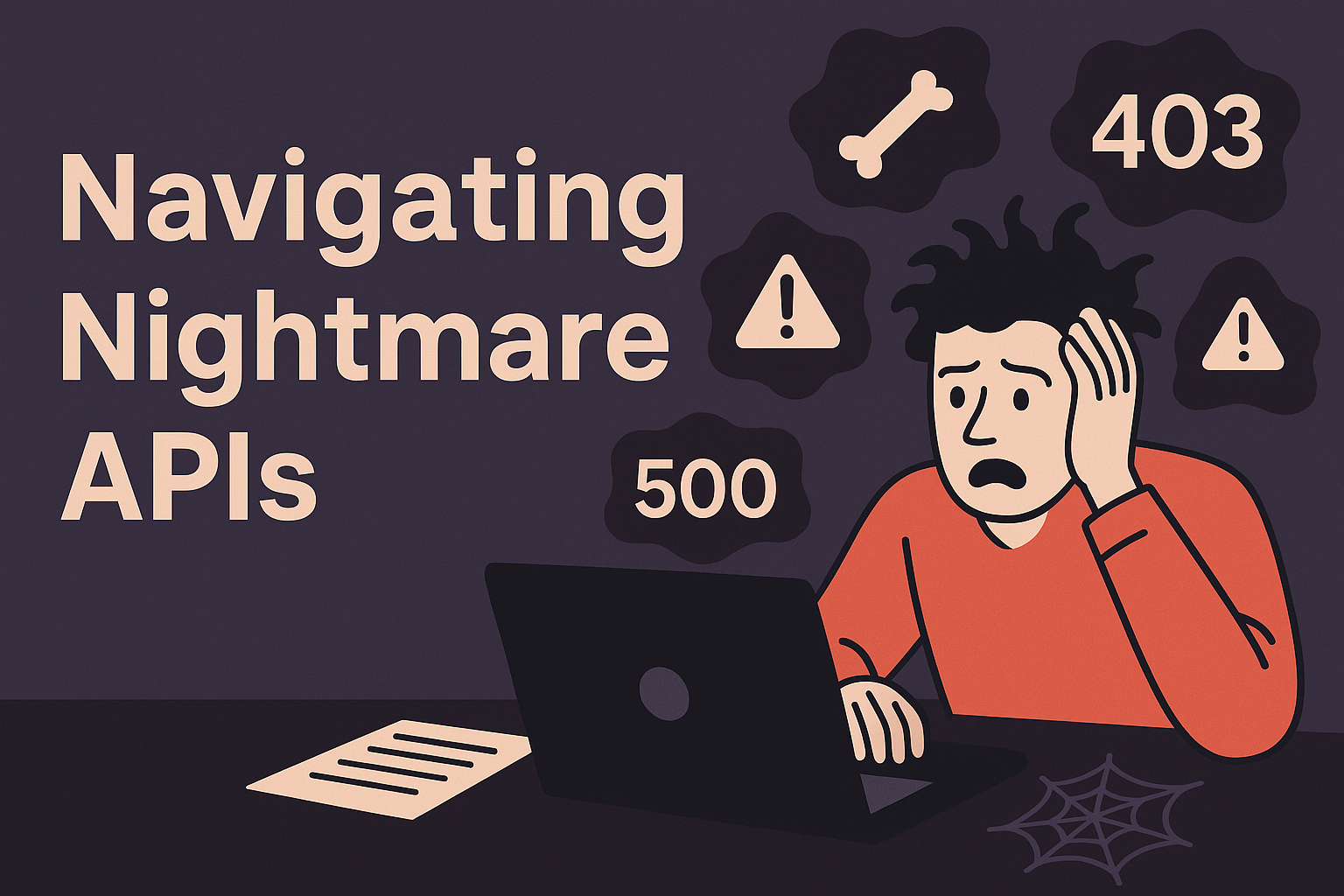Behind every developer’s horror story lies a pattern of systemic issues that plague large platforms. Here’s why some APIs turn into bureaucratic nightmares—and how to navigate them.
1. The Legacy System Trap
Problem:
Many platforms are built on decades-old code, forcing modern APIs to accommodate:
- Backward compatibility with deprecated systems
- Patchwork fixes that create inconsistent behavior
- Undocumented “ghost rules” from old validation logic
Symptoms You’ll See:
422 Validation Errorwith vague messages- Fields that should be optional but are secretly required
- API versions that behave radically differently
Workaround:
- Assume every API call is a time capsule—check docs from your specific era of integration.
- Use network inspection tools to reverse-engineer the platform’s own requests.
2. The Permission Labyrinth
Problem:
Enterprise platforms often:
- Overcomplicate scopes (e.g.,
write_socialvs.write_posts) - Hide critical permissions behind vague labels
- Change requirements without notice
Symptoms You’ll See:
403 Forbiddeneven with “correct” credentials- Features that work in dev but break in production
- Mysterious
401errors after token refreshes
Workaround:
- Assume every permission is a lie—test endpoints manually first.
- Use token introspection to verify actual granted scopes.
3. The Documentation Deception
Problem:
- Docs are often written by non-engineers, missing critical edge cases.
- “Examples” are oversimplified and don’t reflect real-world use.
- Breaking changes are buried in forums, not changelogs.
Symptoms You’ll See:
- Copy-pasted official examples that fail
- Fields marked “optional” that are actually required
- API versions referenced inconsistently
Workaround:
- Scrape their own frontend requests to see real payloads.
- Monitor developer forums—the actual fixes live there.
4. The Validation Paradox
Problem:
APIs often enforce:
- Illogical type checks (e.g.,
"null cannot be coerced to String") - Silent defaults that override your inputs
- Nested validation with cascading failures
Symptoms You’ll See:
- Errors about
nullin fields you didn’t send 500 Server Errorwhen the real issue is a validation quirk- Inconsistent behavior between staging and production
Workaround:
- Over-specify every field, even “optional” ones.
- Mock their validation locally before sending requests.
5. The “We Don’t Want You Here” Design
Problem:
Some platforms deliberately:
- Throttle third-party access to push paid tools
- Obfuscate endpoints to deter automation
- Ban without explanation
Symptoms You’ll See:
- Sudden
429 Rate Limiterrors on low-volume requests - Undocumented
410 Gonefor deprecated endpoints - Shadow bans (your requests work but have no effect)
Workaround:
- Use their official SDKs (if they exist).
- Assume automation is “at your own risk”—have a fallback plan.
The Escape Plan
When dealing with such platforms:
- Reverse-engineer first—assume docs are fiction.
- Isolate API calls behind adapters to handle quirks.
- Expect breakage and monitor aggressively.
- Consider alternatives—sometimes manual work is cheaper than automation.
The worst APIs aren’t just bad—they’re hostile by design. Your best weapon is skepticism.

Leave a Reply